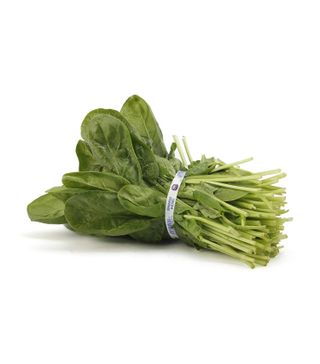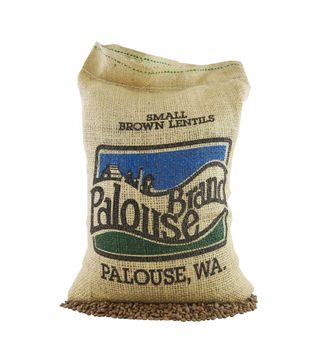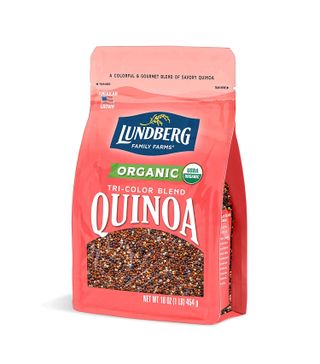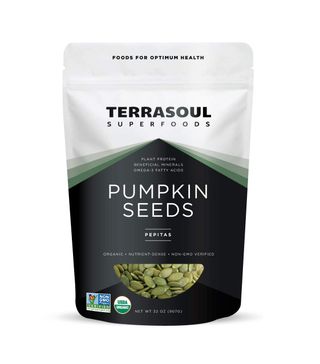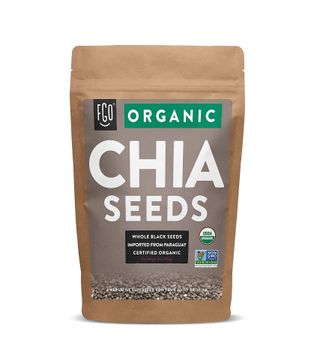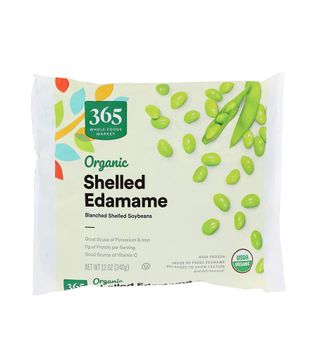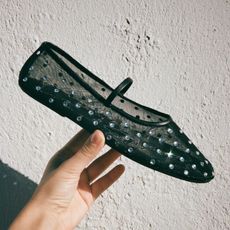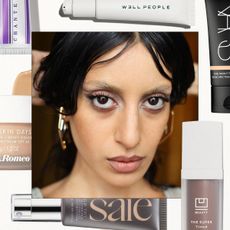Nutritionists Say These High-Iron Foods Give You Healthy Skin, Hair, and More


Since we were kids, we've been told time and time again to eat our fruits and vegetables. And this advice has proven to be well-informed, especially in our adult lives. To maintain energy, healthy bodies, glowing skin, thick and long locks, nice nails, and more, we must eat nutrition-rich food on a regular basis, and high-iron foods are at the top of the list.
Contrary to popular belief, red meat is not the only iron-rich food. We consulted top dietitians, nutritionists, and health experts to share other valuable options that offer up the daily dose of iron you need to feel your best.
Amy Shapiro, MS, RD, CDN, the founder and director of Real Nutrition NYC, echoes this statement. "Many people think that you can only get iron from red meat," says Shapiro. "Truth be told there are many plant-based foods high in iron too."
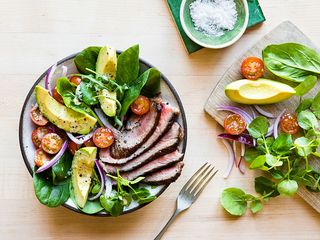
Iron's importance in our health is felt more through its absence and deficiency than through its abundance. Urvashi Singh, a nutritionist and expert in plant-based skincare science and the founder of Aphorism, says, "Iron is essential to our existence, as it is needed for hemoglobin, which is how we transport oxygen to our cells." A lack of iron can mean our cells are not getting enough oxygen to produce energy, which causes fatigue and shortness of breath. Additionally, it can result in hair loss, sallow skin, and unexplained bruising. On its own and in tandem with zinc, selenium, and folate, it's an essential nutrient for good skin, hair, and nails. Plus, women are more likely to be iron-deficient than men, as they lose blood every month during their period and need significantly more during the pregnancy and breastfeeding phases of life.
Now that it's no question iron-packed foods are a necessary part of your diet, here are all the foods and delicious recipes health gurus love.
1. Leafy Green Vegetables
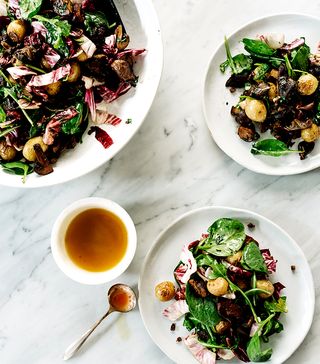
"Dark, leafy green vegetables like spinach, collard greens, and kale are a rich source of iron," explains Jessica Rosen, certified holistic health coach and co-founder of Raw Generation. "They also provide a multitude of other nutrients that promote healthy skin, hair, and nails, including amino acids, folate, and beta-carotene. One of the best ways to easily get your daily dose of iron is to drink cold-pressed green juices like Raw Generation's Energy & Endurance. Leafy, green vegetables are the absolute optimal food for healing your body, brightening your skin, and strengthening your immune system."
Shapiro is also a proponent of leafy greens. "As a nutritionist, I inherently love any type of leafy green, but spinach is so easy to eat and just half a cup provides almost 20% of your daily iron needs," says Shapiro. "With its mild flavor, it is easy to eat in so many ways: in smoothies, in omelets, on its own in a salad or side dish, raw, cooked in soup, etc."
"One cup of cooked spinach has 36% DRV of iron," says Singh. "Spinach is also a good source of vitamin A (105% DRV), vitamin K (980% DRV), folate (66% DRV), and vitamin C (25% DRV). Raw spinach is less—three ounces has 15% DRV of iron. Spinach sautéed with olive oil and a dash of garlic salt is a two-minute recipe that complements any meal. I frankly use spinach for everything: breakfast, soup, and dinner."
If you're looking for a fun spinach recipe, the Care/of scientific advisory team full of leading doctors, scientists, and nutrition experts recommend this:
Spinach Cobb Salad: "Filled with the makings of a well-balanced, hearty meal, I love this cobb salad because it's so rich in iron—spinach, eggs, and chicken are all natural sources of iron," Singh says. "It's also filled with fiber, protein, and healthy fats to keep you full. Follow with some orange slices for dessert. Vitamin C can help your body absorb iron more efficiently."
Ingredients (serving four people):
3 medium eggs
11 ounces of spinach (1 bag)
2 cups chopped grilled chicken
1 cup halved cherry or grape tomatoes
2 avocados, peeled and chopped
1/3 cup crumbled feta (optional)
2 tbsp. olive oil
2 tbsp. lemon juice
Salt and pepper to taste
Directions:
In a small pot, bring water to a boil and add the 3 eggs. Reduce heat to low and cover for 13 minutes. Drain water and rinse eggs in cold water. Peel the eggshells, chop eggs into small pieces, and set aside.
Wash, spin, and dry spinach. Toss with olive oil, lemon juice, salt, and pepper. Add the chicken, tomatoes, eggs, and avocados. Toss again and serve with crumbled feta on top.
2. Spirulina

"Spirulina is arguably the number one superfood on the planet and is easily added to one's smoothies, etc.," suggests Singh. "Four tablespoons give 40% of one's daily dietary requirement of iron. In addition to iron, it is considered a natural supplement that helps with every form of wellness imaginable."
3. Grass-Fed Meat
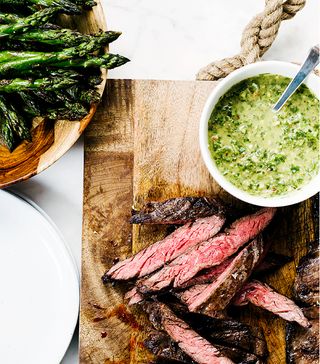
Shapiro doesn't mind having red meat sparingly. "I'll have it once a month. When this happens, I make sure I am buying well-sourced meats that are local, organic, and 100% grass-fed," she says. "Loaded with iron, a six-ounce serving of beef provides 30% of your daily needs of heme iron, which is the more absorbable form."
Singh also swears by grass-fed meat for a good dose of iron, and says, "For omnivores, grass-fed, pasture-raised red meat is good for you—a four-ounce serving provides 20% DRV of iron. Notable among other nutrients provided by grass-fed beef is vitamin B3, which is critical for energy production and is a powerful antioxidant of omega-3 fats. Omega-3s benefits your mood, gut health, and cardiovascular health. Grass-fed beef also contains a lot of vitamin B12, which is required for DNA function as well as brain and cardiovascular health. Because it is heme iron, the bio-availability of iron is higher than vegetarian sources."
Singh's winning beef stew recipe is below:
Ingredients:
1.5 lb. grass-fed beef stew meat cut into 2-inch cubes
1 cup of red wine
2 cups of stock (any stock is fine)
1/2 packet/200 g of mirepoix
1/2 lb. string beans, trimmed or cut to any length between 4 to 6 inches
3 medium-big carrots cut into 2- to 3-inch pieces
Olive oil, coconut oil, or ghee
Directions:
Use a broad-base, thick pot, and cover the base with oil. The broad base aids the browning process. Heat oil to medium-high and add stew meat cubes. Sauté on high heat until all the cubes are nicely browned—should take five minutes. This helps seal in all the juices within the cubes of meat.
Add mirepoix and sauce another minute. Add wine and stock, and bring to boil. Lower to simmer and cover. Cook on simmer for 1.5 hours. Check occasionally to stir and make sure there is enough liquid.
Add green beans and carrots, and put the lid on for another 10 minutes until vegetables are cooked but still maintain their shape and texture. There is no salt, as the stock has salt. Adjust salt and pepper to taste at the end. Serve with potatoes or cauliflower rice.
4. Dark Chocolate
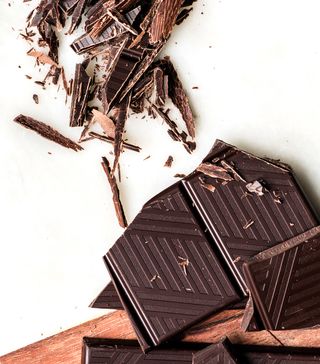
There's a catch, though. Shapiro recommends making sure that the dark chocolate is at least 70% cacao. "One ounce of dark chocolate provides almost 20% of your daily need, and believe me that is easy to do," she says. "Imagine that—cure your sweet tooth and increase your iron levels."
According to Singh, 1.5 ounces (typically half a bar) of 75% to 85% dark chocolate has 33% of the RDA for iron. "In addition to being a great source of iron, dark chocolate is considered to be among the best antioxidant foods out there," confirms Singh. "The high fiber content helps with cardiovascular and GI health, and trace minerals like zinc, magnesium, and phosphorus are necessary for enzymatic and cellular processes across the body to be optimally healthy." She loves buying dark chocolate from Alter Eco and Endangered Species. Singh also loves supplementing iron-rich foods with berries. "I have found berries as dessert to be a great way to get vitamin C in with any and every iron-filled meal," says Singh.
The Care/of team agrees that chocolate has so many nutritional benefits. "It's a natural source of antioxidants. It supports heart health and is rich in iron," says the team. "Having just a small square of dark chocolate after a meal contributes to almost a quarter of the iron recommended each day. Adding iron-rich foods, both as the main dish or as a snack on the side, can really make a difference when it comes to energy levels and cognitive function."
Rosen points out how consuming the proper amount of dark chocolate helps slow down the appearance of wrinkles and fine lines while promoting healthy skin. "Pure chocolate is not only iron-rich but also a source of antioxidants called flavonoids, which fight aging and promote healthy skin," explains Rosen. "Dark chocolate is much better for you than milk chocolate, with a higher concentration of nutrition. However, the absolute best way to get your chocolate fix is in the form of raw cacao powder. Blend it into a smoothie or make your own healthy hot chocolate."
Rosen's favorite healthy hot chocolate recipe:
Ingredients:
1 cup plant-based milk
Raw cacao powder
2 tsp. of raw honey
Directions:
Heat and stir ingredients together on your stovetop and serve.
5. Lentils

This is a vegan source of protein that's loaded with nutrients and doesn't cost much. "A half-cup of lentils provides 20% of your daily needs for iron, and that is easy to eat at any meal," says Shapiro. "Add it to salad or quinoa. Make a soup or even a veggie burger. Lentils are a great source of protein and iron for those who are vegan and vegetarian."
Singh is also a fan of lentils and says, "One cup of cooked lentils provides nearly 40% of the DRV of iron. It also provides 90% of the DRV of folate—folate is a necessary nutrient for hair and nail health and a nutrient during early pregnancy to prevent fetal spine abnormalities. Women are recommended to increase their folate uptake before pregnancy to avoid complications since so many people are folate-deficient. Lentils also provide 67% of the DRV of fiber." Try Singh's favorite lentil soup recipe.
6. Quinoa

"Low in fat and calories, one serving of energy-dense quinoa provides 15% of your recommended daily iron intake and is one of the most nutritious foods that exist, providing B vitamins and other essential minerals like magnesium and calcium," explains Rosen. "In addition to its rich iron content, quinoa offers a complete amino acid profile, which is just what your body needs to be able to repair itself and have healthy hair, skin, and nails. With an abundance of antioxidants, quinoa helps destroy free radicals, delaying the onset of fine lines and wrinkles. Quinoa is gluten-free, and avoiding gluten can also work wonders for beautifying your skin."
Rosen's go-to recipe for an iron-rich quinoa bowl:
Ingredients:
1 cup quinoa, cooked
1/4 cup extra-virgin olive oil
1/4 cup spinach, chopped
1/4 cup chopped cilantro or parsley
1/2 a small red onion, thinly sliced
1/4 cup raisins
Freshly squeezed juice of one lime
Salt and pepper to taste
1 avocado, sliced
Directions:
Fold all ingredients together in a large bowl, top with avocado slices, and serve.
7. Pumpkin Seeds and Chia Seeds
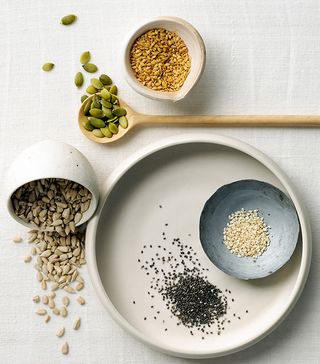
According to the Care/of scientific advisory team, pumpkin seeds are an easy way to ensure that you're getting a healthy dose of iron. They say, "An ounce of pumpkin seeds gives you a quarter of your recommended daily intake. Not only are pumpkin seeds an efficient way to get the iron you need, they’re also high in protein and omega-6s."
Singh agrees and reinstates that pumpkin seeds are a great source, with 1/4 cup (four tbsp.) obtaining nearly 50% of the daily requirement. "They are another superfood, as they are also a great source of manganese, phosphorus magnesium, and copper," Singh explains. "They are also a decent source of protein. They are powerful antioxidants and easy to sprinkle on almost anything from morning granola to soup and dessert."
In the same seed family are chia seeds, which Shapiro recommends. "These tiny seeds pack a nutrient-rich punch with two milligrams of iron per serving—they'll not only help to keep you full—they'll keep you going."
8. Oysters
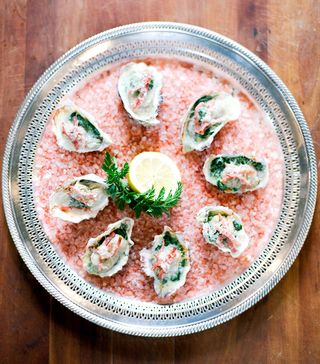
"Oysters are one of the hidden gems of iron-rich foods," says the Care/of team. "Whether you consume them raw or cooked, one serving of oysters has about 4.5 milligrams of iron, which is 25% of the recommended daily value of iron for women and more than half of that required for men."
Shapiro is also a regular at raw bars when it comes to supplementing her iron servings. "Oysters are not just an aphrodisiac; they are also high in iron. So next time you are out to dinner, order the raw bar," says Shapiro.
9. Chickpeas
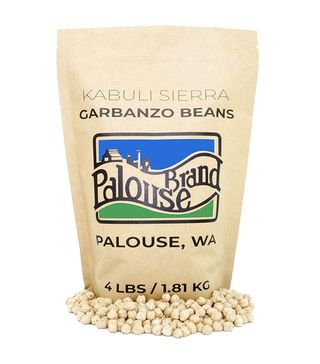
The Care/of team dubs chickpeas as one of the most versatile players when it comes to healthy foods and a natural source of iron. "About half a cup gives you a third of the daily recommended intake of iron," says the team. "Whether it's a spicy chickpea stew or a side of hummus, chickpeas are also great sources of lean protein. Additionally, chickpeas contain high amounts of both soluble fiber, which promotes healthy digestion, and insoluble fiber, which helps regulate blood sugar levels."
10. Tofu
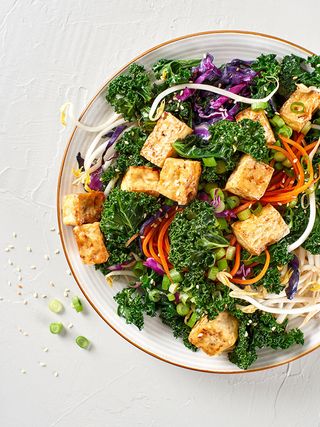
"Good-quality organic, non-GMO tofu provides just as much iron as greens," explains Shapiro. "It's also a wonderful plant-based source of protein."
11. Raisins
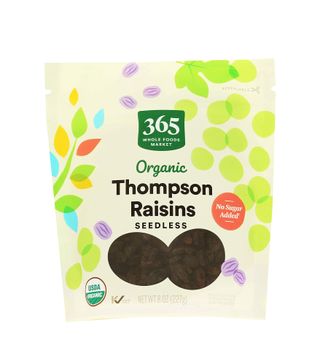
"Remember when you were a kid and you ate raisins instead of candy? Not a bad idea to go back to that habit," suggests Shapiro. "A serving gets you 10% of your daily needs of iron, so add them to your salad, snack on them plain, or top your yogurt or oats with them and feel energized."
12. Sardines

Sardines don't get enough love, but they can be a healthy upgrade to a number of dishes, like pasta, salad, and even toast. "Sardines are incredibly nutrient-dense and packed with beneficial nutrients including iron, omega-3 fatty acids, calcium, and more," explains Claire Virga, RD, MS, CDN, of Rooted Wellness.
13. Edamame
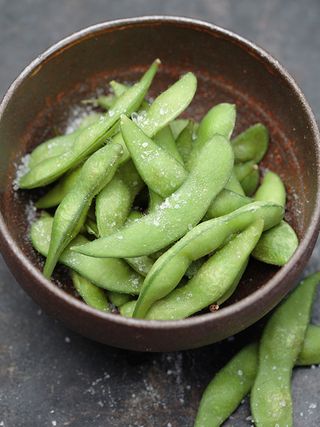
"Packed with plant-based protein and iron, edamame makes a nutrient-dense snack or appetizer," Virga says.
14. Fortified Cereals

Start your day with some iron in with your favorite bowl of cereal. "Many breakfast cereals are fortified with iron," Virga says. "Fortification is the process in which certain nutrients are added to a food which don’t exist naturally in that food."
Next up: 14 Sneaky Signs You May Have This Common Vitamin Deficiency
This article was originally published at an earlier date and has since been updated.
Disclaimer
This article is provided for informational purposes only and is not intended to be used in the place of advice of your physician or other medical professionals. You should always consult with your doctor or healthcare provider first with any health-related questions.
-
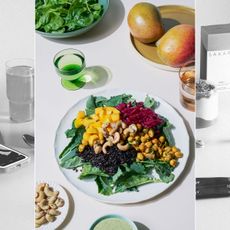 I Only Ate Sakara Life Meals for 30 Days—Here Are 7 Things That Happened
I Only Ate Sakara Life Meals for 30 Days—Here Are 7 Things That HappenedThe brand's 30-Day Fall Reset is finally here.
By Erin Jahns
-
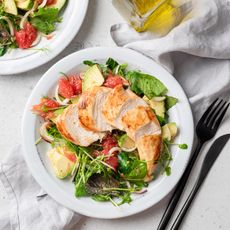 The 6 Warning Signs You're Not Getting Enough Protein
The 6 Warning Signs You're Not Getting Enough ProteinAnd what to eat to up your intake.
By Sarah Yang
-
 Everything This Professional Ballet Dancer Eats to Fuel Her For Performances
Everything This Professional Ballet Dancer Eats to Fuel Her For PerformancesHer grocery staples include high-quality French butter.
By Candice Aman
-
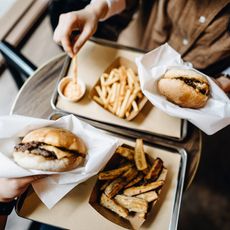 These 8 Foods Are the Worst for Rosacea—Here's What to Eat Instead
These 8 Foods Are the Worst for Rosacea—Here's What to Eat InsteadControl those flare-ups.
By Sarah Yang
-
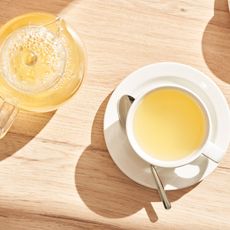 15 Things That Cause Bloating and How to Get Rid of It ASAP
15 Things That Cause Bloating and How to Get Rid of It ASAPTry these.
By Sarah Yang
-
 Is the Alkaline Diet Overhyped? What Experts Want You to Know
Is the Alkaline Diet Overhyped? What Experts Want You to KnowHere's how it works.
By Sarah Yang
-
 I'm an Imperfect Dietitian and My Key to Eating Healthy Meals Is Convenience
I'm an Imperfect Dietitian and My Key to Eating Healthy Meals Is ConvenienceTake a peek at my weekly grocery staples.
By Candice Aman
-
 Avoid These 6 Foods—They'll Wreck Your Gut Health
Avoid These 6 Foods—They'll Wreck Your Gut HealthWhat to eat instead.
By Sarah Yang
